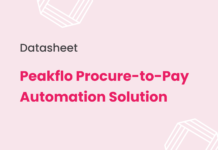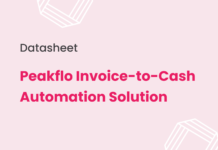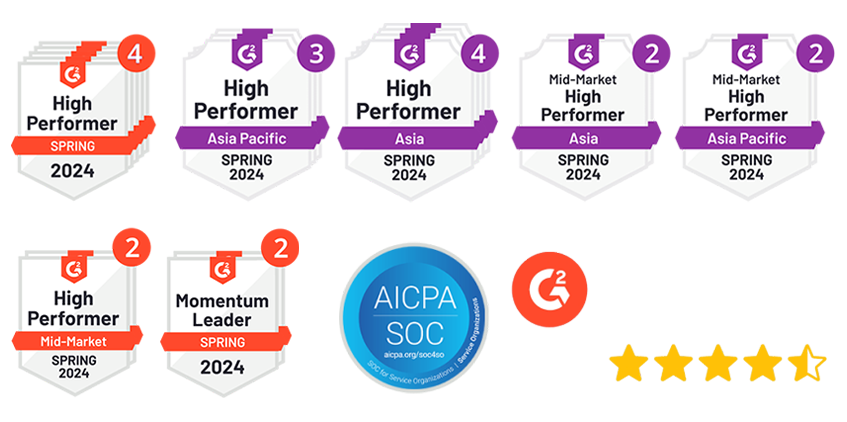AI in accounts receivable has become a priority investment for finance leaders across mid-market businesses. PYMNTS data shows CFOs expect to increase their AI spending by 78% throughout 2025. This surge reflects real business pressure rather than technology trends alone.
Finance teams at mid-sized businesses can save $440,000 and 4,500 hours annually just from automating invoice processes. The AR automation market now grows faster than the established accounts payable automation space. Yet many companies still rely on outdated processes where payments lag, collections lack priority, and cash forecasting depends on manual methods.
The cost of this technological gap is substantial. UK SMEs report 87% of their invoices are typically paid late, creating an average of $300,000 in outstanding payments at any given time. Businesses write off approximately 8% of revenue as bad debts each year. AI-powered AR automation addresses these issues by maintaining process flow without constant staff oversight, ensuring billing continues beyond standard business hours.
Understanding how AI can impact your accounts receivable operations requires more than knowing the technology exists. You need practical insights about implementation benefits, automation opportunities, and strategic advantages that directly affect your financial performance.
This guide examines what CFOs should understand about implementing AI in accounts receivable, covering practical benefits, key automation opportunities, and strategic advantages that impact your bottom line.
Why CFOs Can’t Ignore AI in AR Anymore
Image Source: CFOtech Asia
Financial executives under pressure to achieve more with constrained resources face a reality check with outdated accounts receivable processes. These legacy systems carry substantial hidden costs that extend beyond obvious late payment impacts. Manually managing AR operations consumes approximately 15-20 hours per week of staff time that could support strategic initiatives. Companies using traditional AR methods experience 30% longer DSO compared to those with automated systems.
The Cost of Outdated AR Processes
How much do legacy AR systems actually cost your organization? Companies without automation spend an average of $12-$30 to process a single invoice, while businesses using AI-powered solutions reduce this to just $2-$4. Finance teams waste approximately 24% of their time on manual data entry and another 18% resolving errors and exceptions.
Consider where your accounting staff spends their time each week:
- Manually sending payment reminders (3+ hours weekly)
- Reconciling payments with invoices (5+ hours weekly)
- Creating cash forecasts from incomplete data (4+ hours weekly)
- Resolving customer payment disputes (3+ hours weekly)
The opportunity cost becomes clear when you realize these routine tasks prevent your team from pursuing value-added activities that drive growth.
How AI Is Reshaping Financial Operations
Automated accounts receivable systems process invoices 5x faster than manual methods while reducing processing costs by up to 80%. These systems eliminate human error, which typically affects 3-4% of manually processed transactions.
Cash application shows dramatic improvement with AI implementation. Businesses using AI-powered AR automation achieve matching rates of 85-95% for incoming payments to corresponding invoices, compared to 60-70% with manual processes.
AI analyzes historical payment data to create accurate customer payment profiles. This predictive capability enables finance teams to anticipate payment behavior with up to 90% accuracy, improving cash flow forecasting and working capital management.
The Shift from Reactive to Proactive Finance
What’s the biggest advantage AI brings to accounts receivable? The shift from reactive collections to proactive financial management. Instead of chasing payments after they’re late, predictive analytics accounts receivable systems alert you to potential issues before they occur.
Companies using AI-powered dunning systems collect payments an average of 16 days faster than those using traditional methods. Businesses implementing generative AI in accounts receivable have reduced bad debt write-offs by up to 30% through early identification of at-risk accounts.
The finance function evolves with these capabilities. CFOs at organizations with mature AI implementations report that their teams spend 62% less time on transaction processing and 55% more time on strategic financial analysis and decision support. The finance department shifts from a cost center focused on processing to a value-creation engine driving business growth.
For CFOs, AI in accounts receivable represents more than efficiency gains—it’s about positioning the entire finance function as a strategic asset within the organization.
Key automation opportunities in AR
Image Source: SlideTeam
The accounts receivable cycle presents several areas where AI can address specific operational challenges. These automation opportunities work as building blocks for more efficient finance operations, each targeting distinct pain points that manual processes create.
Automated accounts receivable workflows
Implementing AI in accounts receivable begins with digitizing core workflows. Manual data entry typically consumes 24% of finance teams’ time, creating bottlenecks that slow down the entire process. Automated AR workflows eliminate these inefficiencies while providing real-time insights that help teams manage finances more effectively.
Smart invoice delivery and tracking
Smart invoicing systems use multi-channel delivery to accelerate payment collection. Electronic invoice distribution can improve e-presentment rates by up to 50%, while real-time tracking provides visibility into customer engagement. These systems automatically distribute invoices through email, customer portals, or EDI platforms, then track when invoices are received and viewed.
Predictive analytics for payment behavior
How can finance teams anticipate customer payment patterns before problems arise? Predictive analytics analyzes historical data to forecast payment behavior with remarkable accuracy, enabling proactive management of potential delays. Only 17% of small firms currently automate accounts receivable, yet those implementing these systems can identify early warning signals like payment pattern changes up to 30 days in advance.
AI-powered customer segmentation
Rather than applying uniform collection approaches, AI analyzes payment history and behavior patterns to categorize accounts based on risk profiles. This intelligent segmentation allows teams to create personalized collection strategies for different customer groups. Proper segmentation helps prioritize high-risk accounts and optimize resource allocation for better results.
Automated dunning and follow-ups
Automated dunning systems send personalized payment reminders based on predefined schedules during the collections process. These systems can generate three times more customized emails using AI-generated drafts and intelligent templates, reducing manual effort while improving customer response rates. Payment links embedded in these communications simplify the payment process for customers.
Cash application and reconciliation
Cash application has historically been one of the most labor-intensive AR tasks. Modern AI systems achieve 90%+ straight-through processing rates when matching payments to invoices, working with various payment formats including ACH, wire transfers, and checks. This automation reduces reconciliation time by 75% while cutting receivables costs by half.
Risk scoring and credit decisions
AI-powered risk scoring helps finance teams make more informed credit decisions by continuously analyzing factors like disputes, delayed remittance, and past-due accounts to generate dynamic risk scores. Machine learning models surface early warning signs by analyzing real-time signals and past behavior patterns, enabling teams to intervene before credit risks escalate.
Strategic benefits for finance leaders
Image Source: Spendesk
AI-powered accounts receivable creates strategic advantages that extend well beyond operational efficiency. These benefits reach across your entire organization, directly impacting financial performance and business growth.
Better liquidity and working capital control
AI implementation transforms cash flow management for finance teams. Organizations using AI tools experience substantial benefits in reducing Days Sales Outstanding (DSO) and accelerating payment cycles. Businesses using predictive analytics collect payments an average of 16 days faster than traditional methods, unlocking working capital that would otherwise remain tied up in unpaid invoices.
This improvement in working capital management allows CFOs to make more strategic financial decisions. Rather than waiting for cash to flow in naturally, you can predict and plan around more reliable payment timelines.
Stronger compliance and fraud detection
AI-driven systems enhance fraud detection and regulatory compliance substantially. These technologies analyze financial data continuously, identifying suspicious patterns and anomalies in real time. Studies show that AI-driven compliance automation reduces operational costs by up to 30% while improving accuracy and regulatory adherence. Advanced algorithms can analyze large volumes of financial data to detect suspicious behaviors that may indicate money laundering or financial misconduct.
Scalability without increasing headcount
AI in accounts receivable addresses a common CFO challenge: handling growth without proportional staff increases. Organizations can maintain AR workflows even during hiring freezes. This scalability allows businesses to process more transactions without adding headcount, typically reducing DSO by 12 days compared to companies with minimal automation.
The resource optimization becomes particularly valuable during economic uncertainty. Your finance team can focus on strategic initiatives rather than transaction processing, creating more value for the organization.
Reduced manual errors and rework
AI removes human error from routine payment processing, cash application, and reconciliation tasks. The self-learning nature of AI means accuracy continues improving as the system processes more transactions. This creates a more reliable financial operation overall.
Lower operational costs
AI-powered automation delivers significant cost savings across accounts receivable operations. Research shows companies adopting AI automation reduce operational costs by 20–30% and improve efficiency by over 40%. Specifically in accounts receivable, AI can reduce invoice processing costs from $12-$20 to under $5 per invoice.
Improved forecasting with predictive analytics
AI-driven predictive analytics transforms financial forecasting capabilities. These systems can predict invoice payments with up to 81% accuracy, potentially saving organizations significant amounts monthly. Historical data analysis enables AI models to forecast payment timelines with remarkable precision, allowing better cash flow management and financial planning.
Accurate forecasting becomes a competitive advantage. CFOs can make more informed decisions about investments, expenditures, and strategic initiatives when cash flow predictions are reliable.
Enhanced customer experience
AI-powered agents and self-service portals provide customers with 24/7 access to account information, payment options, and dispute resolution tools. These platforms answer frequently asked questions, guide customers through payment processes, and offer instant support – reducing manual intervention needs by AR staff. Improved customer experience leads to faster payments and stronger relationships.
For finance leaders, this enhanced customer experience translates to fewer disputes, faster resolution times, and ultimately better cash flow predictability.
Overcoming Barriers to AI Adoption
AI adoption in accounts receivable presents challenges that require strategic planning. The benefits are compelling, but successful implementation depends on addressing several key barriers effectively.
Choosing the Right AI Tools
Define specific AR challenges you want to solve before exploring vendors. Rushing decisions based solely on internal pressure to embrace AI creates problems later. Focus on long-term value by evaluating how potential solutions address your unique business needs. Document where your AR team spends the most time and where errors occur most frequently to guide your selection process.
What should you prioritize? Look for solutions that directly address your biggest pain points rather than the most advanced features. A tool that reduces manual data entry by 50% provides more immediate value than one offering complex predictive analytics you’re not ready to use.
Ensuring ERP and CRM Integration
Seamless integration with existing systems determines whether AI delivers maximum value. Many accounts receivable functions connect to legacy ERP or accounting platforms, creating technical challenges when implementing AI. Include your IT team early in the discovery process to understand access requirements and integration complexity. This proactive approach prevents implementation roadblocks and ensures data flows properly between systems.
Poor integration often becomes the primary reason AI initiatives fail to deliver expected results. Your new AI tools must work with existing workflows rather than creating additional silos.
Building Internal Buy-In and Training
AI typically enhances staff capabilities rather than replacing them. Specialized training is crucial—not just on using new tools but also on trusting and validating results. Clear communication across departments and leadership buy-in remain critical for smooth transitions. Consider starting with small-scale pilots before full rollout to build internal confidence.
Address common concerns upfront. Many employees worry about job security when AI implementation begins. Emphasize how these tools free up time for higher-value work rather than eliminating positions.
Measuring ROI and Success Metrics
Establish concrete metrics to evaluate success after implementation. Track operational indicators like DSO (days sales outstanding), late payment rates, and processing times to measure impact. Business value metrics help translate operational improvements into financial impact that demonstrates return on investment. This systematic tracking guides ongoing AI decisions, even when some benefits are difficult to quantify.
Start with simple metrics that clearly show progress. Measuring time saved on manual tasks or error reduction rates provides immediate validation while more complex financial benefits develop over time.
What’s next: Trends CFOs should watch
Image Source: Financial Executives International
The accounts receivable landscape continues to evolve beyond current automation capabilities. Finance leaders should monitor emerging developments that will create new opportunities for operational efficiency and strategic advantage.
Rise of generative AI in accounts receivable
Generative AI in accounts receivable now moves beyond basic automation toward creating tailored documents and communications. These AI models draft personalized payment reminders, compose detailed dispute responses, and generate financial analyses specific to individual customer situations. Unlike rule-based systems, generative AI adapts its communication style based on customer preferences and payment history.
Agentic AI and autonomous finance agents
Autonomous finance agents will soon handle routine AR tasks without requiring human oversight. These systems learn from each interaction, refining their approach based on outcomes and making sophisticated decisions about collection strategies. The technology represents a shift from following programmed rules to making independent judgments about customer management.
Hyper-personalized dunning strategies
Automation in accounts receivable evolves toward true personalization. Advanced systems analyze hundreds of variables—past payment behavior, communication preferences, seasonal business patterns—to create individually tailored collection approaches for each customer. This level of customization can substantially improve response rates compared to standardized collection processes.
AI as a strategic advisor, not just a tool
The most significant development involves AI-powered AR automation becoming a strategic consultant rather than just an operational tool. Next-generation systems will identify cash flow optimization opportunities, recommend credit policy adjustments, and suggest relationship management strategies. These capabilities extend AI’s role from processing transactions to advising on financial strategy.
Finance leaders who understand these developments can position their organizations to benefit from emerging capabilities while competitors struggle with outdated approaches.
How Peakflo AI Elevates Accounts Receivable
Peakflo AI brings the power of automation and intelligence directly to your accounts receivable processes. From smart invoice delivery and real-time tracking to predictive analytics for customer payment behavior, Peakflo transforms manual, time-consuming tasks into seamless workflows. AI-powered cash application and reconciliation reduce errors and processing time, while automated dunning ensures faster collections with personalized communication for every customer.
With Peakflo AI, finance teams gain more than efficiency—they gain strategic insights. Predictive analytics help forecast cash flow accurately, risk scoring guides better credit decisions, and intelligent segmentation ensures resources focus on high-priority accounts. This allows your team to shift from reactive collections to proactive financial management, improving liquidity, reducing bad debts, and strengthening customer relationships.
Scalable, intuitive, and fully integrated with your existing systems, Peakflo AI enables CFOs to drive growth without adding headcount, while maintaining complete control over accounts receivable operations.

Ready to transform your AR process? Try Peakflo AI today and see how smarter automation can unlock better cash flow and strategic insights for your finance team.
Conclusion
AI-powered accounts receivable addresses real challenges that finance teams face daily. Mid-sized businesses can save approximately $440,000 and 4,500 hours annually while reducing invoice processing costs from $12-$30 to just $2-$4 per invoice.
Moving from manual, reactive processes to automated workflows changes how your team operates. Your finance staff can focus on strategic analysis instead of chasing late payments. This explains why CFOs expect to increase AI investments by 78% in 2025.
The advantages go beyond efficiency improvements. Better working capital control, stronger fraud detection, enhanced scalability, and improved customer experiences all contribute to more reliable financial operations. Accurate forecasting capabilities provide better data for decision-making.
Future developments in generative AI, autonomous finance agents, and personalized dunning strategies will continue to evolve. These technologies will function as strategic advisors that complement your team’s expertise rather than just operational tools.
AI in accounts receivable provides practical solutions to persistent problems. Finance leaders who address these challenges now position their organizations for better cash flow management and more strategic financial operations.
FAQs
Q1. How can AI improve accounts receivable processes? AI can automate invoice processing, predict payment behavior, personalize collection strategies, and enhance cash application accuracy. This leads to faster payments, reduced manual errors, and improved cash flow management.
Q2. What are the cost savings associated with AI in accounts receivable? Implementing AI in accounts receivable can save mid-sized businesses around $440,000 and 4,500 hours annually. It can also reduce invoice processing costs from $12-$30 to just $2-$4 per invoice.
Q3. How does AI impact the role of finance teams? AI transforms finance teams from focusing on transaction processing to strategic financial analysis. It allows staff to spend less time on routine tasks and more on value-added activities that drive business growth.
Q4. What are the challenges in adopting AI for accounts receivable? Key challenges include selecting the right AI tools, ensuring integration with existing systems, building internal buy-in, providing adequate training, and measuring ROI. Overcoming these barriers requires strategic planning and clear communication.
Q5. What future trends should CFOs watch in AI-powered accounts receivable? Emerging trends include generative AI for personalized communications, autonomous finance agents for routine tasks, hyper-personalized dunning strategies, and AI evolving into a strategic advisor role beyond just an operational tool.










![Why AI Sales Calls Are Making Good Sales Reps Even Better [2025 Guide] ai sales calls](https://blog.peakflo.co/wp-content/uploads/2025/09/65168cf6-3001-4733-8cbc-12d5684cf449-218x150.webp)


































